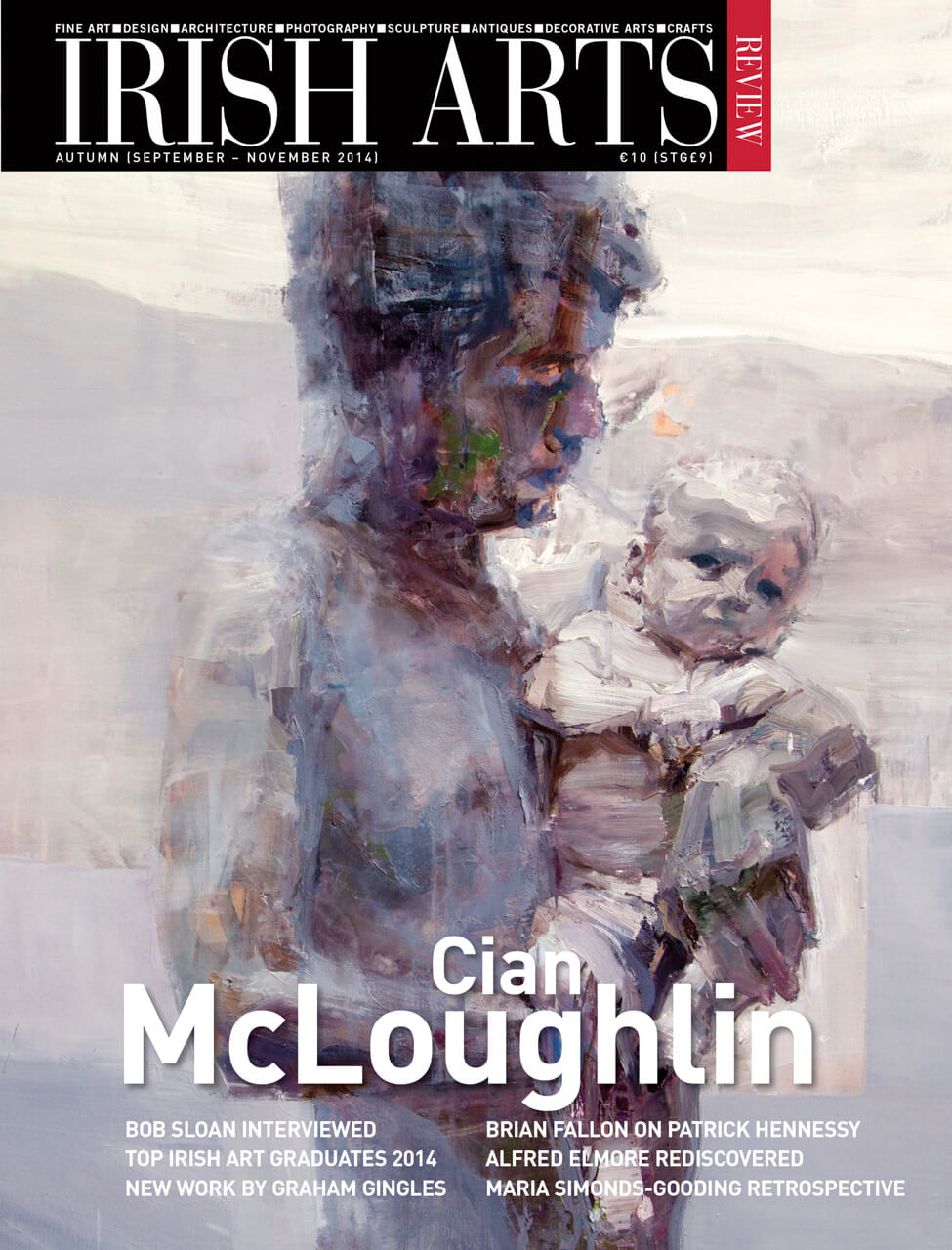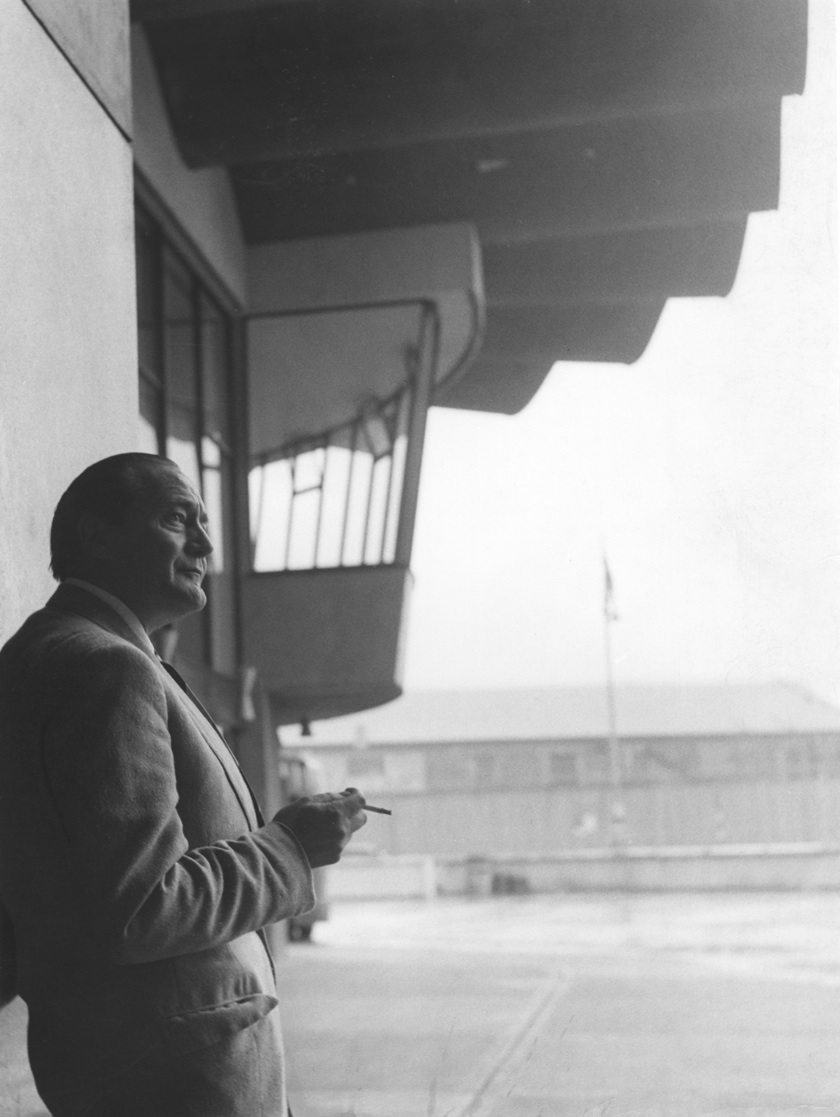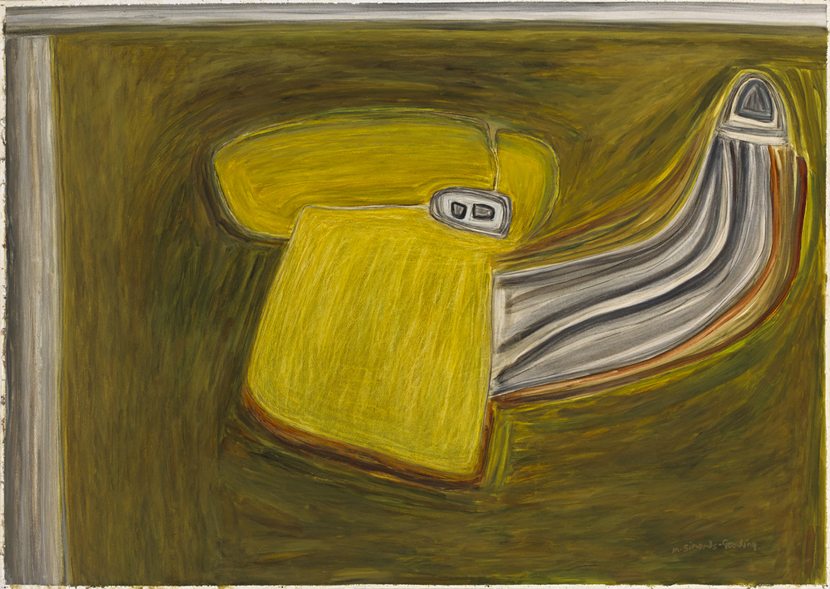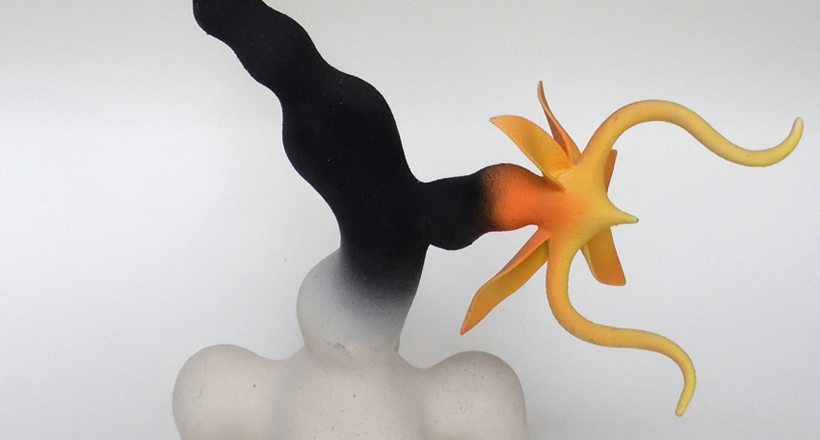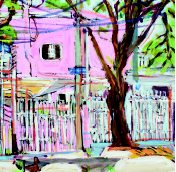
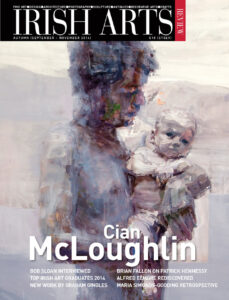
Elizabeth Cope has returned from a productive season painting in South America; Alannah Hopkin previews the chromatic results to go on view this autumn at the Origin Gallery, Dublin
I paint anywhere and everywhere, and always from life’ says Elizabeth Cope. ‘The painting evolves as I work. I usually paint what’s around me, I just paint serendipitously, if you like.’ The result is, not surprisingly, characterized by spontaneity and energy, often with a humorous touch. Decorative and figurative, the domestic interiors, animals, plant life, streetscapes, portraits and self-portraits are a record of Cope’s world, a world in which there are no boundaries between her everyday domestic life and her art. She cites Matisse and Raoul Dufy as influences, and reveres Monet, but over her long career her own flamboyant style has become unmistakable.
In 1972 following classes at the National College of Art & Design in Dublin, Cope went to London to the Sir John Cass School of Art in Whitechapel, where she enjoyed working with experienced life models, including the ‘naked civil servant’, Quentin Crisp. Further study at the Chelsea School of Art was followed by a return to rural Ireland, punctuated by periods of travel. In the 1990s she was Trócaire’s artist-in-residence in Somalia and in Honduras.
Cope showed at the Solomon Gallery for over twenty-five years, has shown widely in London, with occasional exhibitions further afield, often related to her travels. ‘I think you have to travel if you live in Ireland’, she says with typical candour. Her show at Dublin’s Origin Gallery follows a ten-week stay in Brazil last winter, in which she immersed herself totally in the new environment.
Home for Cope since 1991 is Shankill Castle, Co Kilkenny, which she says has ‘about 42 rooms’ (and a ghost). She is almost as well known for living in a castle, as she is for her paintings. She uses the castle’s reception rooms as a permanent gallery, and works in the interstices of a busy domestic life shared with her husband Geoffrey, who farms the castle’s 117 acres. There are artists’ residencies to organize, and various tenants, as well as extensive gardens to tend, while Reuben, one of her three grown-up children, also works on the farm. Despite having a spacious studio loft beyond the stable yard, Cope also likes to work in the gardens, the conservatory, and the hayshed, often rising as early as 5am in summer to paint.
The importance of escaping for prolonged periods of intensive work is evident. The Brazilian trip came about in a typically serendipitous way. It was suggested by one of the castle’s garden workers, a young Brazilian whose mother, a painter, organized the residency. Cope stayed in Rua Salgado, the street seen in Jaragua’s Peak (Fig 4) in an area to the northwest of Sao Paolo. Pink House, Rua Sepetiba (Fig 1) depicts a pretty pink building near to her base, whichturned out to be an old folks’ home.
This modern city of 20 million inhabitants was about as far from rural Kilkenny as you can get. Mornings were spent painting, and afternoons visiting galleries and museums. As in Honduras, the overhead power lines and the exuberant vegetation caught her eye. She usually worked outdoors, forgoing an easel, and using fast-drying oils as her only concession to travel.
While in Brazil she took a seven-hour bus ride to Rio de Janeiro. On Copacabana Beach (Fig 5) she spotted an attractive palm tree near a makeshift football net: ‘I sat under it on an old coat with my paints, then I noticed two or three hobos under another tree: in certain situations I can paint very quickly.’
Parrots in Parque de Aves (Fig 3) was painted in the bird park beside Cope’s hotel on a visit to the Igua√ßu Falls. She often works in zoos, and the exhibition will also feature etchings of birds and animals in the Sao Paolo Zoo.
Elizabeth Cope’s work is confident, colourful, and brimming with energy. She has the ability to find a picture in unusual places – a suburban street, a quiet corner of Copacabana, a bird park rather than the spectacular Igua√ßu Falls. Her belief in art as a subconscious, spontaneous activity coexists with a well-honed sense of composition. Painting is second nature to this artist, painting without boundaries, without concepts, but rich in the sheer joy of being.
Elizabeth Cope, ‘From Brazil to Ballinskelligs’, Origin Gallery, Dublin,
30 October – 30 November 2014.
All images © The Artist. Photography by Stephen Maynard.
Alannah Hopkin is a freelance writer based in Cork.
